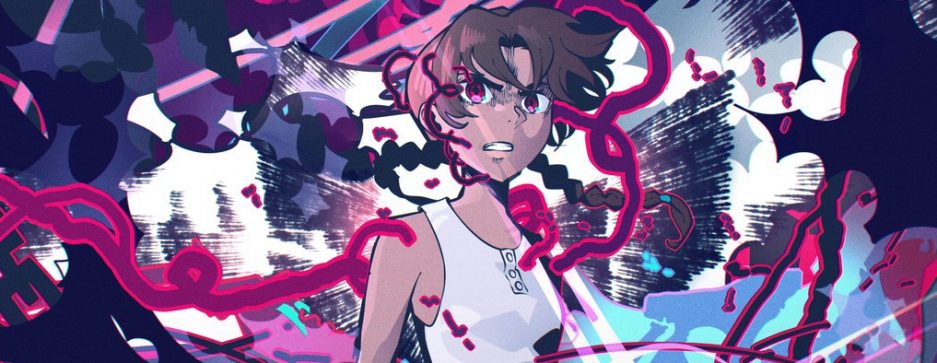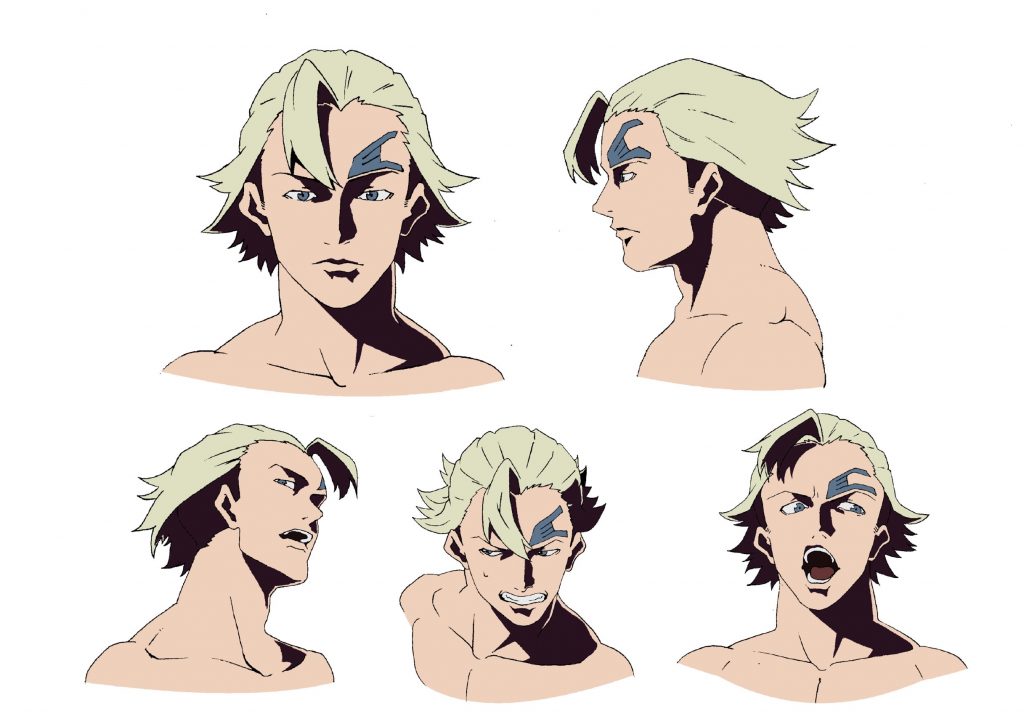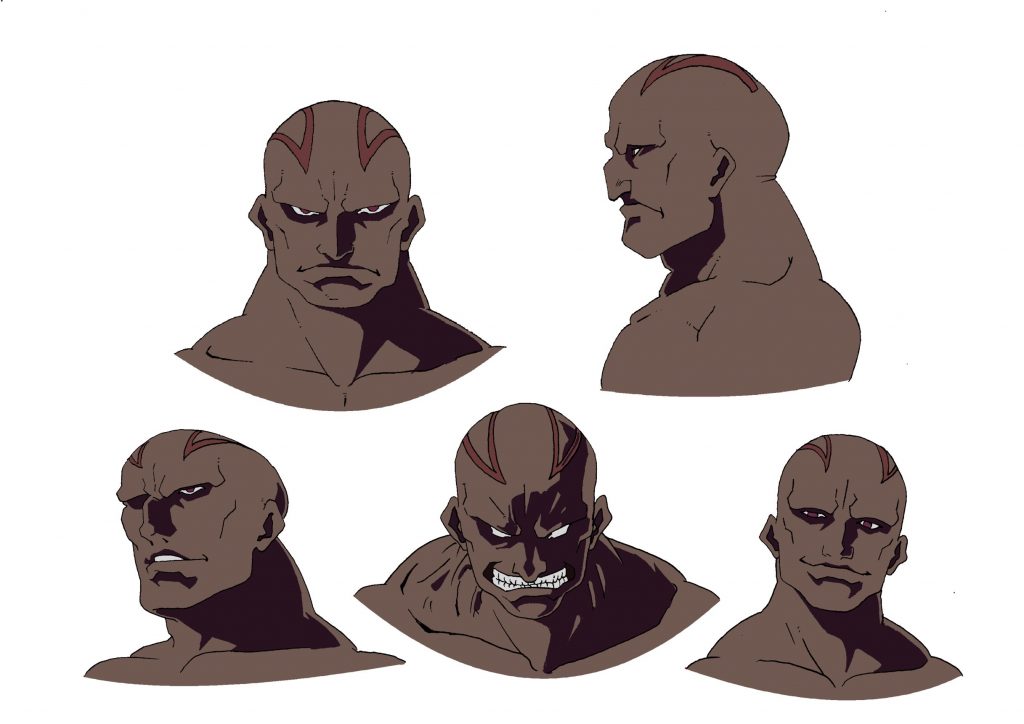It’s impossible to talk about Shaft these days without bringing up the mass exodus of talent and the reshuffling of roles to compensate– as we covered in lengthy detail here. I mentioned Ryo Shimura being one of the more exciting names for me back when he was just an inbetweener. The imperfect ambition of Nue and Inherit spoke to me more than the fanciest and most well-realized student films. It’s easy to point out all the cracks, but Shimura’s passion towers over them all– not a day goes by where I’m not thinking about the climactic 1-vs-100-man fight towards the end of Inherit!
Fast-forward two years later and he finally made his proper debut as an animator on RWBY and the MagiReco finale. While I drove myself crazy trying to figure out what cuts were his based on the limited info we had, I was lucky enough to speak with Shimura himself! With some help from from my friend and fellow Artist_Unknown member kbnet, we were fortunate enough to set up this interview with him. Join us as we dig deep into his influences, the thought process behind his shorts, and his goals for the future.
The interview was translated into English by the Fabulous Fede.
Why did you decide to become an animator?
I originally entered college with the intention of becoming a comic artist. I played basketball all the way through high school, but as school was ending, I became interested in fine arts, so I decided to apply to a specialized university.
I created my first animation when I was already in my third year there, and found it quite rewarding, so I decided to pursue this career path. I’ve always loved to watch movies since the get-go, so you can imagine I was also quite tantalized at the idea of making some film of my own.
Animation was the perfect middle ground as it gave me the opportunity of both drawing manga-esque figures and creating movies.
Why did you decide to take on a 16 minute solo short with Inherit?
For Inherit, I didn’t set any particular limit in terms of length: after all, that was my last university work, so I wanted to pour into it all my ideas and do everything I’d always wanted to do. It turns out when you put all that into storyboard form without any sort of limit, it ends up 16 minutes.
Before Inherit, I had produced around five animation shorts all by myself; I was quite confident about making a film twice as long compared to even my previous longest one thanks to the know-how I had developed by trial and error.
The production lasted around half a year, although I wasn’t able to dedicate all my time to it as I was also job hunting and working at my part-time job at the same time.
What was it like to make the film?
I was aware when I decided I wanted to make Inherit that it would be a long journey, but strangely enough I don’t remember it being particularly hard or difficult, although maybe my brain decided to erase the most difficult moments.
I think I didn’t feel too stressed because I was doing what I loved. The voice cast was actually composed of my friends who also participated in my previous attempts at animation. It was our third time working together, so I assume at that point everyone was starting to get a good grasp of the job, even outside the standards of self-produced anime.
Most of my shorts are produced entirely by me, so I’m really grateful they were able to help me with the performance when that aspect was particularly needed.
Your character designs are very distinctive – especially your faces. Do you have a particular philosophy or set of inspirations for facial animation and design?
When it comes to the character design process, the first aspect I focus on is how to conceptualize the shading. My style is quite angular, as it is reminiscent of 80’ss and 90’s anime. I’m particularly influenced by titles such as Macross Plus, Kite, Cowboy Bebop, and Trigun, among many others. So when it comes to faces, as you can already figure out if you know those titles, I prefer to simplify shapes in a more realistic way compared to the cute deformations of moe anime.
That said, I don’t believe my most important influence was anime at all. In fact, I’d say it was the game Guilty Gear that forms the bedrock of my artistic sensibilities.
When I draw, I’m quite particular about the influence of the eyes on the whole facial expression. “The eyes speak as much as the mouth,” as the saying goes, and there are times when I want to express the emotions and the resolve of the characters just with their facial expressions alone.
Nue and Inherit both feature a primitive, visceral sort of fighting. Is there anything that you find especially compelling about that sort of hand to hand combat?
The appeal of visceral and primal action sequences to me has to do with how directly you can perceive the emotions portrayed. I enjoy movies that show concrete emotions even in fighting scenes, for example, when you can clearly observe how anger has powered up a martial technique. Nue starts by showing a particularly well-refined way of fighting and it ends by showing the strength of brute-force powered by feelings. Inherit was made following the same approach.
Did you make a grammar and phonology for the language in Nue?
The fictional language I’ve created for Nue is actually quite simple: just try reading the lines backwards in English…I didn’t have the knowledge nor the time to create a fully-functioning fantasy language a la Star Trek (laughs).
Did working on Inherit as a mostly solo project give you any useful skills for working efficiently under tight schedules?
In all honesty, I don’t recommend making long anime films all by yourself on such a tight schedule like mine. Otherwise, you’re going to make all sorts of compromises on a technical level to avoid lagging behind schedule.
However, I cannot say that I didn’t learn anything from it. When I joined the studio, I was able to look at the animation process not just with the perspective of a mainstream animator but as something more since I was able to experience the joys of sound design, video-editing, digital coloring etc. etc. etc. while making my shorts.
If your primary objective is quality though, better assembling a larger team or focusing on short animations.
How did the Nagaoka Institute of Design teach the anime production pipeline? Was there anything surprising about Shaft’s workflow?
There weren’t classes about actually animation-making in my university so I’m pretty much self-taught. You can see that in my shorts as the inbetween planning is quite terrible. In fact, I probably didn’t even know what an inbetween frame was during that era.
A lot of my curriculum was about live-action filming and photography, so I experimented with my camera a lot. Yet, my visual sensibilities are still partly based on the large number of movies I’ve seen. After joining Shaft I was incredibly surprised by pretty much everything as their workflow felt so professional compared to mine.
Was there anything about Shaft that attracted you to them specifically?
What attracted me to Shaft was their visual sense, which is unique even among other animation companies. Take Bakemonogatari for example: an animated show seemingly inspired by both classic Japanese movies of old but also by the French New Wave. It definitely shocked me when I first watched it in high school.
I’d like to make anime in innovative new styles that break from the anime stereotype too, so I decided to try Shaft.
How did you feel about your first genga work?
My first genga work was quite the nerve-wracking experience, incomparable to douga work. When I was still a university student, I could draw without a care in the world. These were my own characters, after all.
Drawing other people’s characters is a completely different story. I felt that difference keenly during the first episode of RWBY, but later on I was able to rediscover the sensation of being able to take on these challenges, communicate depth, and more generally find joy in drawing. In the end, I believe this sort of daily struggle is something necessary for an artist to grow.
How do you feel your work has changed during your professional career?
Now I’m officially a key animator, but in the grand scheme of things I’m basically just an anime industry rookie, so I doubt something particularly huge changed in me…I don’t know, maybe something really changed but I still don’t know about it. Anyways, for now I’m just doing my best to help the productions I’ve been allowed to participate in.
Are cuts assigned for you, or do you have a choice? If so, what cuts do you like working on in particular?
It’s the production assistant in charge of the episode that chooses the section of cuts for me. I’m still not that great at making these sorts of decisions. I want to learn about all types of motions and gain more experience. However, a personal desire of mine would be getting better at portraying everyday life segments.
Anime these days is all about flashy action, and I feel that grounded dramas are being neglected. I’d rather watch and work on those over action-centric anime with rich sakuga moments. But I won’t lie, there is also a part of me that wants to do action. After all, I’m still an action movie sucker (laughs).
Is there anyone in the studio you look up to in particular?
My inspiration as an animator is Mr. Genichirou Abe: he is able to draw all sorts of movements with such a diverse range of timings. No matter the category, they’re always so pleasant to watch. I also admire more dazzling animators like Mr. Hiroto Nagata.
What are your goals for the future? How do you feel about getting more and more responsibilities within the studio?
My goal is to become a general anime director. It has been my dream since the day I joined the studio, and nothing has really changed about that. I’m currently studying different aspects of anime production such as more general storytelling, technical direction, and color composition so as to become knowledgeable enough to produce an original anime.
My first concrete objective is to make Inherit into a pitch for a TV anime. But for now, I will do my best with key animation work at Shaft.
Last question! Do you have music recommendations for our readers? It’s okay to recommend even the pieces you listen to while working.
I often listen to Yasutaka Nataka’s songs. I have liked him since I was in middle school. Even if you don’t know his name you have probably listened to some of his pieces as I’m told the compositions he wrote for the idol group Perfume are also quite popular overseas as well. Funnily enough, he’s from my same prefecture. I would love him to compose some music for my animated works someday.


